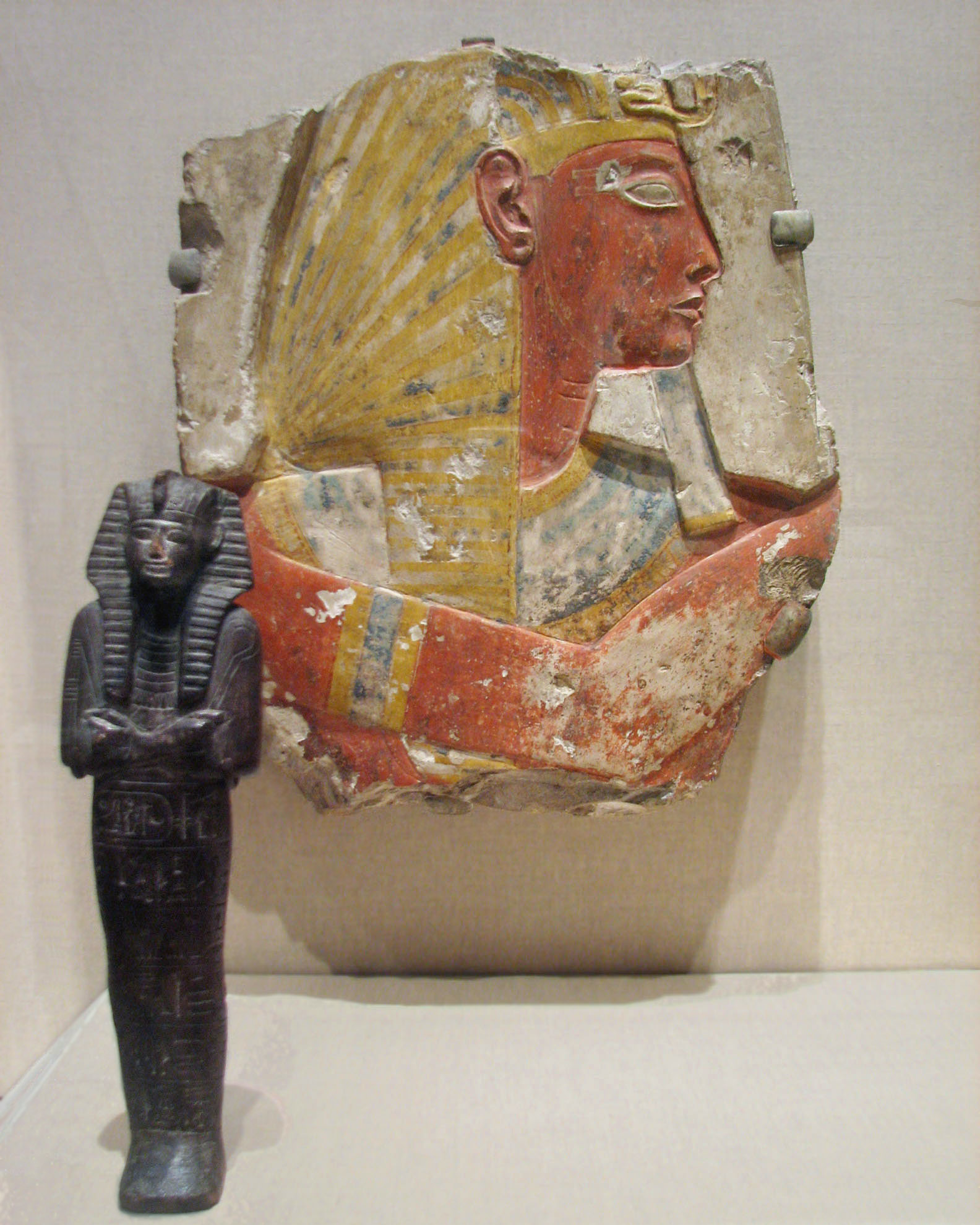"The color and style of this relief strongly suggest not only that it came from the temple of Ramesses II at Abydos but also that it was carved in the first two years of his reign, perhaps by the same artists who decorated the adjacent temple of his predecessor, Seti I. The aquiline nose and the fat folds on the throat are particularly characteristic of Nineteenth Dynasty relief. Ramesses is shown with arms raised in a gesture of offering or worship." (From the Museum website)
While Seti I has the most extensive shabti collection, "with over 1,000 known examples in wood, faience, steatite, and alabaster", "in contrast, relatively few shabtis of Ramesses II are known." (Campbell Price, "Other Tomb Goods", _The Oxford Handbook of The Valley of the Kings_, edited by Richard Wilkinson and Kent Weeks, (Oxford University Press), page 279)
The following I include, because it was likely Ramesses II's ring:

Scarab Ring
Glazed steatite and bronze
New Kingdom, XIX Dynasty, ca. 1279-1213 B.C.E.
?, Charles Edwin Wilbour Fund
|
(From the info card)
"The scarab ring lacks his prenomen, but has an associated epithet ("Beloved of Amun") and his nomen, or birth name (Ramesses)"




